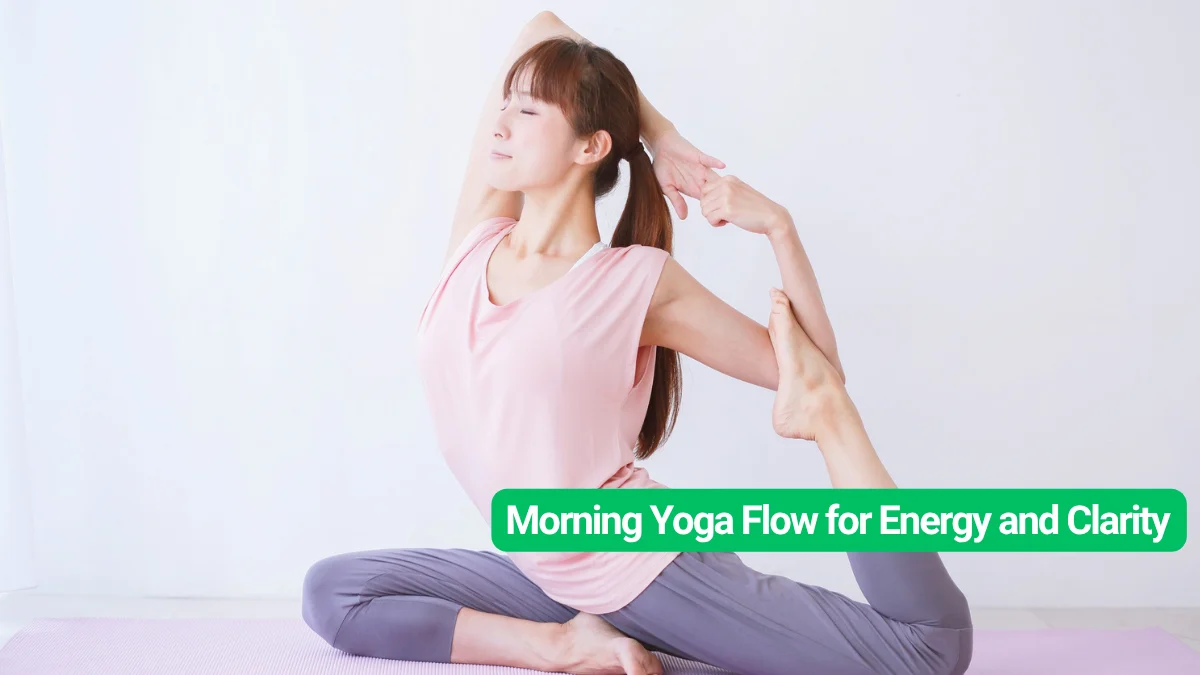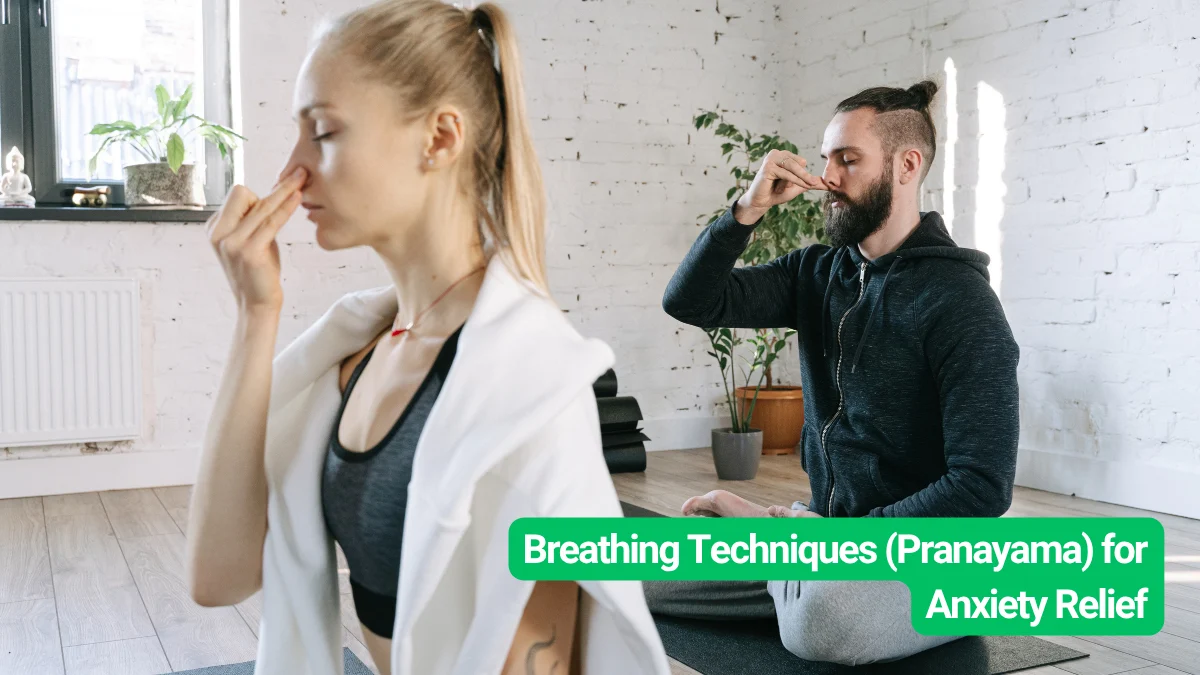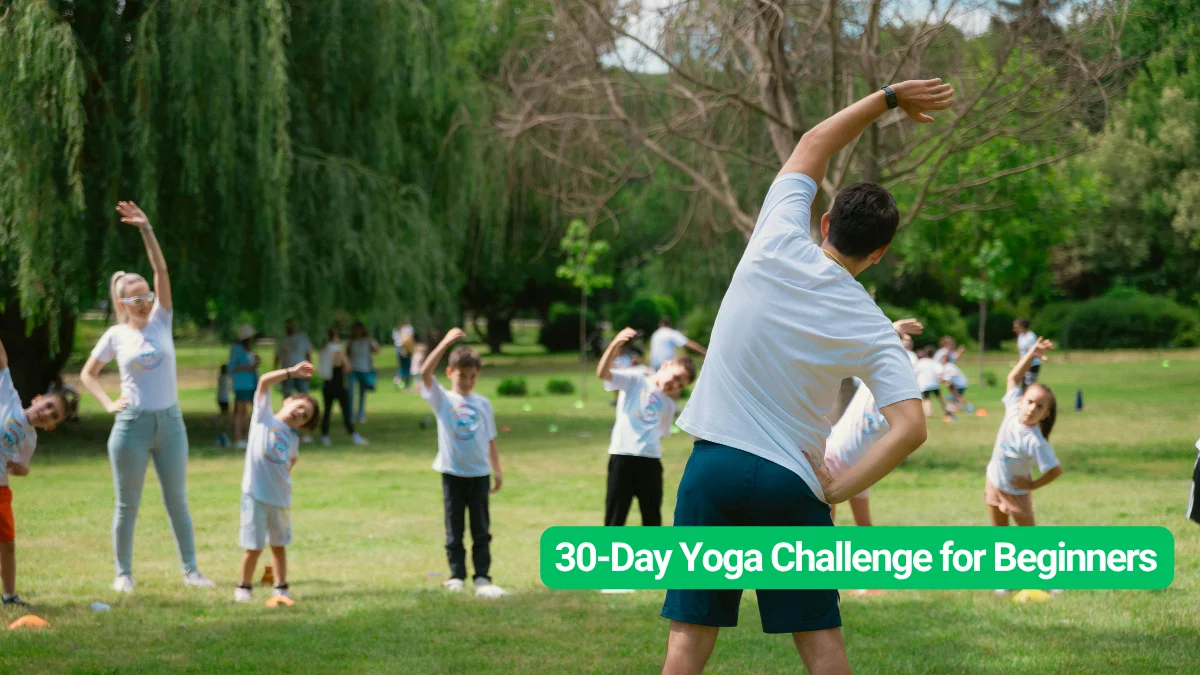Back pain is common today because many people spend long hours sitting, scrolling, and working on devices. Yoga is one of the simplest ways to ease this pain. The right poses help relax tight muscles, improve posture, and support better movement. Regular practice also builds awareness of how your body holds tension. This awareness helps you correct imbalances before they turn into pain.
Key Takeaways Yoga for Back Pain
- Certain yoga poses calm tight muscles and support better spinal movement.
- Slow practice improves balance, posture, and everyday comfort.
- Gentle backbends and twists reduce stiffness in the lower and upper back.
- Regular practice may reduce the need for pain medicines.
- Start with simple poses and increase practice slowly.
Also Read

Morning Yoga Flow for Energy and Clarity
How Yoga Helps With Back Pain
Yoga brings attention to how the spine, shoulders, and hips move. When these areas stay stiff for long hours, pain becomes common. Simple yoga poses promote gentle stretching, which helps reduce pressure from bad posture. Light backbends support the lower back, while slow twists improve mobility. Many people feel relief in a few minutes because the body responds well to slow movements and steady breathing.
Top 10 Yoga Poses That Ease Back Pain
1) Cat-Cow Pose
Cat-Cow is a soft movement across the spine. It helps the back move through its natural range. Start on all fours. Keep hands under shoulders and knees under hips. Inhale and lift the chest while the stomach moves down. Exhale and round the spine. Continue for one minute. This pose increases blood flow and reduces stiffness in the neck, shoulders, and lower back.
2) Downward-Facing Dog
This pose stretches the hamstrings, spine, and shoulders. Begin on all fours. Press the hands down and lift the hips up. Keep a small bend in the knees. Let the spine lengthen toward the hips. Hold for up to one minute. It supports better alignment and reduces pressure from long hours of sitting.
3) Extended Triangle Pose
Triangle creates a long stretch from the legs to the spine. Stand and place the feet wide apart. Turn one foot forward and angle the other slightly. Extend the arms and lean toward the front leg. Place the hand on a block or the shin. Lift the other arm upward. This pose helps reduce backache and may help ease discomfort from tight hips and neck.
4) Sphinx Pose
Sphinx is a soft backbend that supports the lower spine gently. Lie on the stomach. Bring the elbows under the shoulders and lift the chest. Keep the gaze forward. Engage the lower abdomen lightly so the back stays supported. Hold for up to five minutes. This pose improves posture and reduces stress in the upper body.
5) Cobra Pose
Cobra stretches the chest and abdomen. Lie on the stomach. Place the hands under the shoulders. Press the palms and lift the chest with a slight bend in the elbows. Lift as high as comfortable. Release slowly back to the mat. Cobra helps build strength in the back and supports the natural curve of the spine.
6)Locust Pose
Locust Pose is useful for strengthening the lower back in a gentle but steady way. When the body lifts from the mat the muscles around the spine activate slowly which helps reduce stiffness. This pose also supports better posture because it wakes up weak muscles that often cause back pain in daily life. With regular practice the spine feels more supported and stable during walking sitting or bending.
This pose also improves blood flow in the lower back area. Better circulation brings more oxygen to tight muscles which makes recovery easier. Many people feel a sense of openness in the chest and abdomen which reduces the pressure that builds up while sitting for long hours. The pose can be practiced by beginners because it does not require advanced flexibility and can be modified easily.
7) Bridge Pose
Bridge Pose is known for opening the front body and releasing tension from the spine. When the hips lift the back muscles stretch and relax which brings relief from mild back pain. This pose also works well for people who feel tightness due to long sitting or incorrect posture. It gently reverses the pressure created on the spine throughout the day.
Another important point is that Bridge Pose strengthens the glutes and hamstrings. Stronger muscles in these areas reduce pressure on the lower back because they provide extra support. Many people also feel calm after this pose because the chest expands and breathing becomes deeper. This helps the nervous system relax which can make back pain easier to manage.
8) Half Lord of the Fishes
Half Lord of the Fishes is a gentle twist that helps release tightness from the spine. When the body twists slowly the muscles around the back stretch in a balanced way which helps reduce discomfort. This pose also improves spinal mobility and is useful for anyone who feels locked or stiff in the mid back or lower back. The twist also refreshes the circulation around the spine.
This pose is also known for easing tension that builds up from stress or long sitting. Twisting helps massage internal organs which supports better digestion. When digestion improves there is less pressure on the lower back which many people do not notice is a common cause of pain. The pose also promotes calm breathing which helps reduce muscle tightness.
9) Two-Knee Spinal Twist
Two-Knee Spinal Twist is a simple but very effective pose for releasing lower back tension. When the knees fall to the side the spine moves into a natural twist which helps loosen tight muscles. The pose is also relaxing for the hips which often carry pressure that travels up to the back. Many beginners find this pose comforting because it allows the body to relax fully on the floor.
This pose also supports the nervous system and calms the mind. When breathing slows the back muscles soften which helps reduce pain. Some people also feel relief in the upper back and shoulders because the twist lengthens the entire back line. This pose is great before sleep because it relaxes the whole body.
10) Child’s Pose
Child’s Pose is comforting and gentle which makes it useful for easing back pain. When the body folds forward the spine lengthens in a natural way. This reduces pressure that builds in the lower back. The pose also allows the hips to open slightly which helps relieve tension that often leads to back discomfort. Many people feel calm and grounded while holding this pose.
This pose also helps soothe the mind. Slow breathing in this position signals the body to relax which reduces muscle tightness. It is safe for most people and can be practiced anywhere without strain. The more the back relaxes the easier it becomes to manage daily movement without pain.
More Poses That Support Relief
Locust Pose
Locust strengthens the back and legs. Lie on the stomach with arms along the body. Lift the head, chest, and arms. You may also lift the legs. This pose improves muscle strength that supports your spine.
Bridge Pose
Bridge stretches the spine and works the core. Lie on the back. Bend the knees. Lift the hips upward while keeping the feet and shoulders grounded. This pose reduces tightness in the lower back and helps realign the spine. Release slowly to the mat.
Half Lord of the Fishes
This twist supports movement in the middle spine. Sit on the mat. Bend one leg close to the body. Place the other foot outside the knee. Lengthen the spine and twist. Keep the hips grounded. This pose opens the shoulders and supports healthy rotation in the back.
Two-Knee Spinal Twist
This restorative twist supports the lower back. Lie on your back. Bring the knees to the chest. Lower them gently to one side. Keep the arms extended. Hold for 30 seconds. This pose reduces stiffness across the back and hips.
Child’s Pose
Child’s Pose is a safe resting pose that calms the body. Sit on the heels and lower the chest toward the thighs. Extend the arms or bring them alongside the body. Rest the forehead on the mat. Hold for up to five minutes. It helps the spine lengthen and reduces stress.
What Research Shows
Some studies show that yoga can reduce chronic back pain when practiced consistently. One study found that people who practiced yoga or physical therapy for a year reported similar improvements in pain and daily function. Another study reported small but clear improvements in short-term pain and mobility. Many people also reduced their use of pain medicines. These results suggest that yoga is a good option for many, but it may not suit everyone. It is important to speak with a doctor before starting if you have injuries or severe pain symptoms.
How to Start Your Routine
Anyone new to yoga can begin with short sessions at home. Ten minutes a day is enough to learn basic movements. Books, online classes, and simple guides help you build a routine. Once you know the poses, you can design your own sequence for daily relief. People who prefer in-person guidance can join studio classes that focus on gentle yoga or back care. Always choose teachers who understand your needs and allow slow progression.
Final Thoughts On Yoga For Back Pain
Yoga remains one of the safest ways to release back tension without heavy strain. Simple stretches, light backbends, and soft twists build strength and mobility. Regular practice supports better posture and reduces daily stress. With steady practice, many people notice fewer aches and more comfort in everyday movement.






